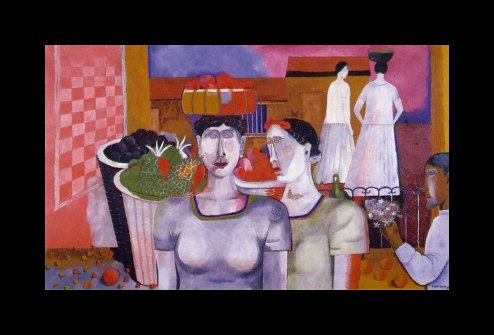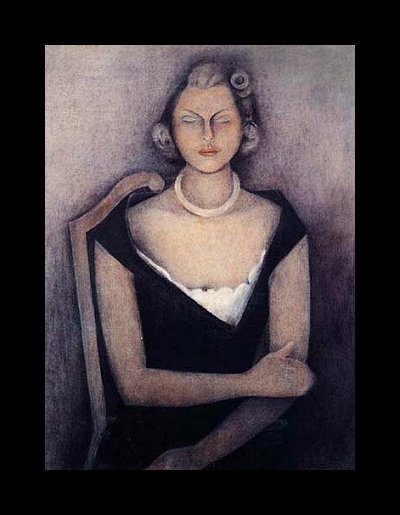Rufino Tamayo (1899-1991)
Get a Rufino Tamayo (1899-1991) Certificate of Authenticity for your painting (COA) for your Rufino Tamayo (1899-1991) drawing.
For all your Rufino Tamayo (1899-1991) artworks you need a Certificate of Authenticity (COA) in order to sell, to insure or to donate for a tax deduction.
Getting a Rufino Tamayo (1899-1991) Certificate of Authenticity (COA) is easy. Just send us photos and dimensions and tell us what you know about the origin or history of your Rufino Tamayo (1899-1991) painting or drawing.
If you want to sell your Rufino Tamayo (1899-1991) painting or drawing use our selling services. We offer Rufino Tamayo (1899-1991) selling help, selling advice, private treaty sales and full brokerage.
We have been authenticating Rufino Tamayo (1899-1991) and issuing certificates of authenticity since 2002. We are recognized Rufino Tamayo (1899-1991) experts and Rufino Tamayo (1899-1991) certified appraisers. We issue COAs and appraisals for all Rufino Tamayo (1899-1991) artworks.
Our Rufino Tamayo (1899-1991) paintings and drawings authentications are accepted and respected worldwide.
Each COA is backed by in-depth research and analysis authentication reports.
The Rufino Tamayo (1899-1991) certificates of authenticity we issue are based on solid, reliable and fully referenced art investigations, authentication research, analytical work and forensic studies.
We are available to examine your Rufino Tamayo (1899-1991) painting or drawing anywhere in the world.
You will generally receive your certificates of authenticity and authentication report within two weeks. Some complicated cases with difficult to research Rufino Tamayo (1899-1991) paintings or drawings take longer.
Our clients include Rufino Tamayo (1899-1991) collectors, investors, tax authorities, insurance adjusters, appraisers, valuers, auctioneers, Federal agencies and many law firms.
We perform Rufino Tamayo art authentication, appraisal, certificates of authenticity (COA), analysis, research, scientific tests, full art authentications. We will help you sell your Rufino Tamayo or we will sell it for you.
With a career spanning almost an entire century, Rufino Tamayo is considered one of the world’s leading international artists. Born in the Mexican state of Oaxaca, Tamayo was a full-blooded Zapotecan Indian. After the death of his parents at a young age, he moved to Mexico City to live with a relative. There he studied at the Escuela Nacional de Artes Plasticas (San Carlos Academy). His stay there was short-lived, however, as he preferred to learn independently.
It was during this time that Tamayo helped to create the technique of Mixographia. This style of art entails using plastic forms and integrating them with colors and textures to create the style that Tamayo became famous for. He would use vivid colors, reflective of his Mexican heritage to add depth to his work. Tamayo wanted to reach deep into his Mexican ancestry through his earthy, yet bold colors.
Later on, he would use Mixographia to create prints in 75 to 100 counts. He would arrange a collage out of textured media, such as rope or wood, then cast it in copper and use that as his prints template. It was through this method that Tamayo was able to capture depth in each of his printts the way that he wanted. Tamayo even made his own paper so that it would react with the ink the way that he wanted.
During the beginning of his career in the 1920s and 30s, Tamayo butted heads with his contemporaries. Other Mexican artist of the time like Rivera and Siqueiros valued popular public art, such as murals, which highly expressed political and social issues. Tamayo simply wanted to paint whimsically, expressively and decoratively; for enjoyment rather than to make a political statement. Due to the pressure from other artists, Tamayo fled to New York in 1926. He also lived in Paris for a while, and it was his exposure in the United States and Europe that gained him acclaim. It wasn’t until much later that his home country valued his talent.
In 1941, Tamayo was appointed the head of the department of Ethnographic Drawing and Archaeological Museum. This period introduced him to folk art, and this influence can be seen in his work from the 1940s on.
Even though Tamayo’s prints are highly recognizable and carefully labeled and numbered, his oil paintings are not as easy to distinguish. His prints have a very recognizable style and color palate, but his oil paintings vary, though not drastically. Tamayo strays from his warm color scheme of reds, yellows and earth tones in his painting “Women of Tehuantepec” (1939). In this scene, painted from the memory of his aunts fruit stand, he uses white, blues and greens. The background is still reflective of his warm color scheme, but these colors tend to pop out more.

Tamayo, while a borderline abstract painter, was also capable of painting beautiful portraits, such as “Retrato de la Senora Natasha Gelman” (1948). Though still highly reflective of his style, Tamayo embraces classical elements with this piece. For this reason, an early Tamayo portraiture done in the classical style may be floating around in Europe or the Americas somewhere, possibly dated around 1926 through the early thirties. During this period, he was just beginning to be known, so his work may have been misplaced or set aside.

While Tamayo was a muralist, an oil-painter and a print maker, he is grouped with no particular school or style of art. His themes are often surreal, as “Atormentado” (The Tormented,1948) shows. However, his compositions, which are based on ancient Mexican sculpture, edge toward the ideas of Cubism. His bright color palate and sometimes wild styling has also pegged him a Fauve. He has even been called an abstract expressionist. In essence, he is just Tamayo, working in a style all his own, and considered one of the most revered Latin artists of all time.

Reviews
1,217 global ratings
5 Star
4 Star
3 Star
2 Star
1 Star
Your evaluation is very important to us. Thank you.
